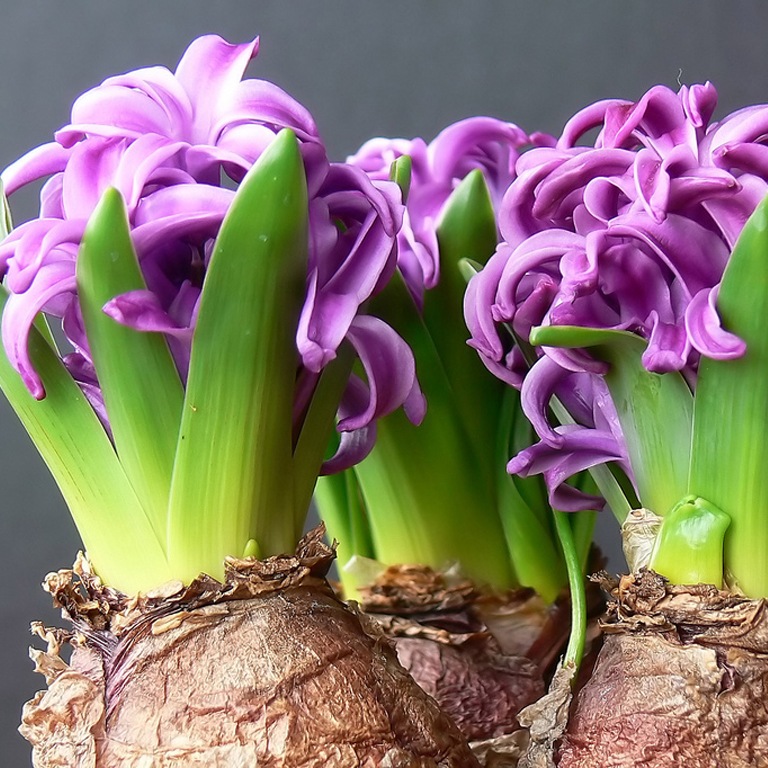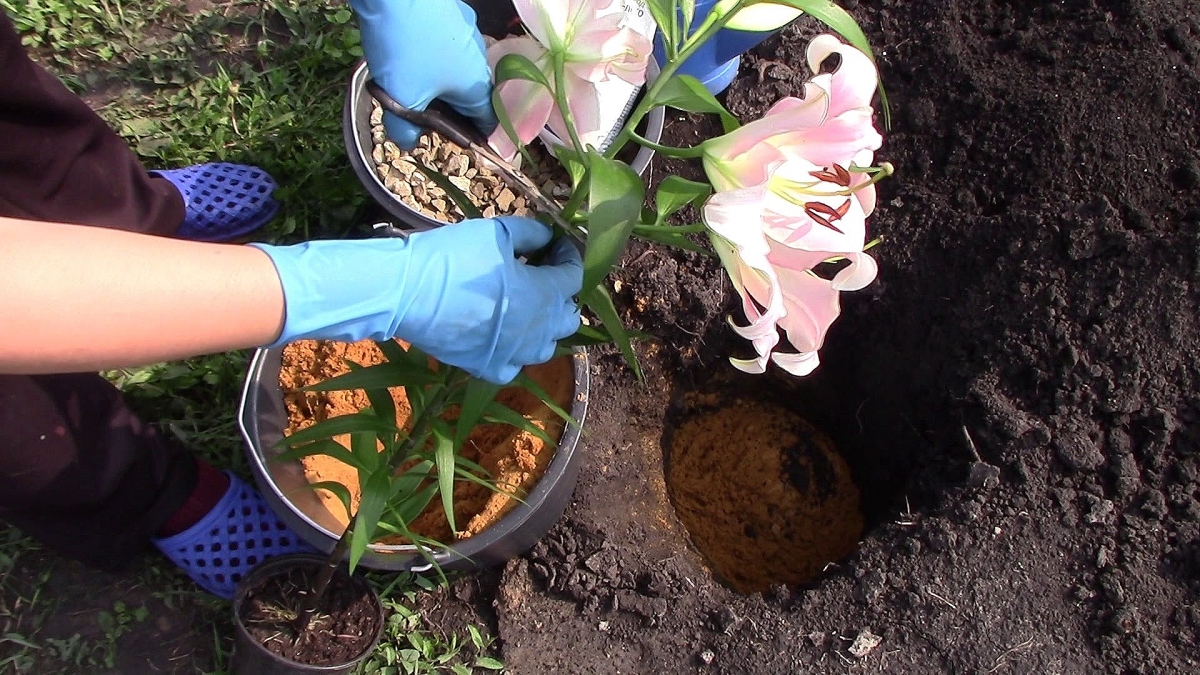Content:
Summer residents believe that bulbous perennials are a decoration for a personal plot. The different flowering periods allow for the creation of luxurious compositions, from spring to autumn. In addition, caring for bulbous flowers for the garden is simple.
Growing bulbous perennials
Bulbous garden flowers include bulbous primroses that appear with the arrival of spring, crops that bloom in summer and autumn. The bulb (underground part) is responsible for the development of plants. Among bulbous perennial crops are:
- corms;
- small-bulbous;
- bulbous.
Many gardeners prefer the bulbous flower with long narrow leaves when cultivated in the country. When growing plants, emphasis is placed on:
- Planting bulbous crops in a group. Separate planting of 1 or 2 plants will not add much beauty to the garden bed. Planting 15 bulbs of various shades will become a bright spot in your front garden.
- Planting bulbous perennials under large, spreading trees. Before flowering, the trees will not have time to be covered with thick leaves, the bulbs will receive adequate nutrition and lighting.
- Digging tubers for the winter. This applies to gladioli, begonias. Lilies are left for wintering in the soil.
- The depth of planting bulbous, which is 3 times the height of the individual.
- Storage of planting material. The dug out bulbs are disinfected in a solution of potassium permanganate and dried. To preserve the bulbs, use paper or canvas bags, cardboard boxes. Bulbs without mechanical damage are stored in slightly damp peat.
- If you want to create a bulbous flower bed, small bulbous low-growing crops are planted in the foreground: muscari, freesia with shades from red to purple tones. In the background, there is a place for large-bulbous tall plants.
Buying bulbous perennials
They buy material for planting immediately before the procedure itself. Sometimes in the store for sale there are tubers and bulbs of summer crops at the end of winter, so it is important to consider storing the bulbs before planting.
Experienced gardeners place tubers in sand or peat and keep them at a maximum temperature of +7 ºC in a refrigerator or basement. Onions are also planted in a container in order to later transfer to an open bed.
If bulbous perennials are purchased, the first-class tuber is valued:
- with a tight bottom;
- no cracks, dents or scratches;
- without rot and mold.
If you plant bulbous flowers in autumn
Site preparation and planting material
When choosing a planting site for bulbous plants, crop rotation is followed. Plants are relocated to a new flower bed after growing in the same area for 3-4 years. Otherwise, the development of phyto-diseases and growth retardation of bulbous are possible. If you choose a site for a colored bed, pay attention to:
- Humidity. Stagnation of water negatively affects the roots of plants, leading to decay. However, a place on a hill is not the best option for bulbous perennials (winds increase the evaporation of moisture).
- Illumination.Bulbous plants need sunlight, especially for warmth on cold days in spring.
- Soil. To get beautiful varietal flowers, you need to take care of the soil, which corresponds to the following parameters: loose, retaining moisture, fertile, neutral or slightly acidic. Fertilize the soil 2 months before planting the corms.
- External appearance. To fill the bald patches that remain after bulbous flowering in early spring or with the arrival of the summer season, plants are planted near perennials.
- Disinfection. The bulbs are treated before planting with the contact fungicide Maxim, which protects the roots from rot and stimulates the growth of the bulbous plant.
Bulbous perennials are planted:
- on the lawn - early or autumn flowering crops;
- narrow and wide ribbons on the flower garden;
- in rock gardens and rockeries;
- in a container as a houseplant.
Rules for planting bulbous flowers in autumn
When planting bulbous perennials, you will need:
- Weed out weeds from the future flower bed. No soil loosening required.
- Pits are made to a depth which is calculated as follows: when the soil is light, 3 bulb heights, if the soil is heavy, 2. For each variety, the planting density is specified.
- Place the flower tuber bottom down, cover it with soil and tamp it a little.
- The landing site is mulched to protect the root system from autumn or winter cold. The landing site is marked with pegs so as not to accidentally touch it during spring digging.
When to transplant bulbous flowers
Spring bulbous plants are planted in the fall, in the spring - autumn and summer varieties. Both the season and the month of landing play a role. For example, galanthus, together with crocus, will delight with flowering in early spring, but the first flower is planted in the soil from mid-summer to early autumn, the second from September to November.
When they prefer to transplant lilies in the fall, they are guided by the rule that spring beauties wake up early and it is inappropriate to injure them at this moment.
It is recommended to plant daffodils and tulips dug up in the summer and purchased in the soil until frost-resistant. These perennials take root in cold soil.
Small-bulbous plants are transplanted first - they take longer to adapt to the soil. The embedding depth is 5 cm.
Corms and large bulbs are buried at least 15 cm. When planting a summer-flowering exotic plant - hymenokallis (another name is Peruvian daffodil), the top of the bulb is located on the surface.
The date for planting hyacinths falls on the end of the first autumn month and the first days of October, so that the primroses have time to take root, but do not germinate before the soil freezes.
Landing scheme
Florists are interested in how to plant bulbous plants. Individual perennials (for example, crocuses) feel great in group plantings. Others like solitude. The distance between amaryllis, krinums, lilies during planting ranges from 20 to 40 cm.
To prevent perennial bulbous crops from crowding on the flower garden, the distance between the plants is strictly observed. The average interval between large onions is at least 5 cm.
Care
There are different opinions among gardeners on how to feed a bulbous flower. Some summer residents add bone meal or complex fertilizing to the planting hole. Others add rotted manure or compost during the budding phase.Some growers do not forget to feed bulbous perennials with potassium and phosphorus with the arrival of spring.
Agricultural practices differ in effectiveness. The right, which option to choose, remains with the gardener.
Bulbous perennials bloom at different times, which makes it possible to make stunning continuously blooming clumps. The natural beauty of bulbous, unpretentiousness will transform the garden area beyond recognition, fill it with rich colors.














